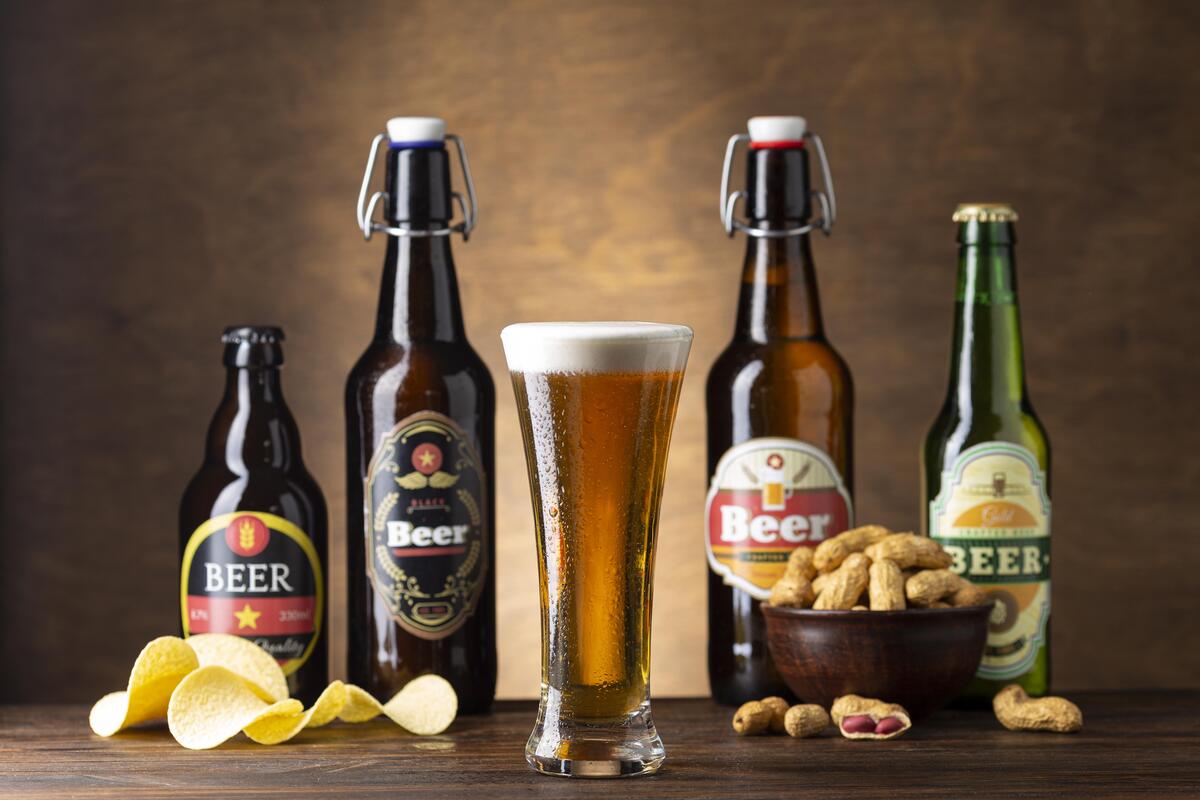Domestic beers aren’t just holding their ground in 2025—they’re capitalizing on a perfect storm of trade shifts, consumer trends, and strategic reinvention. With import tariffs reshaping the market and drinkers prioritizing value and local identity, American brewers are seizing the moment. Here’s how they’re rewriting the rules.
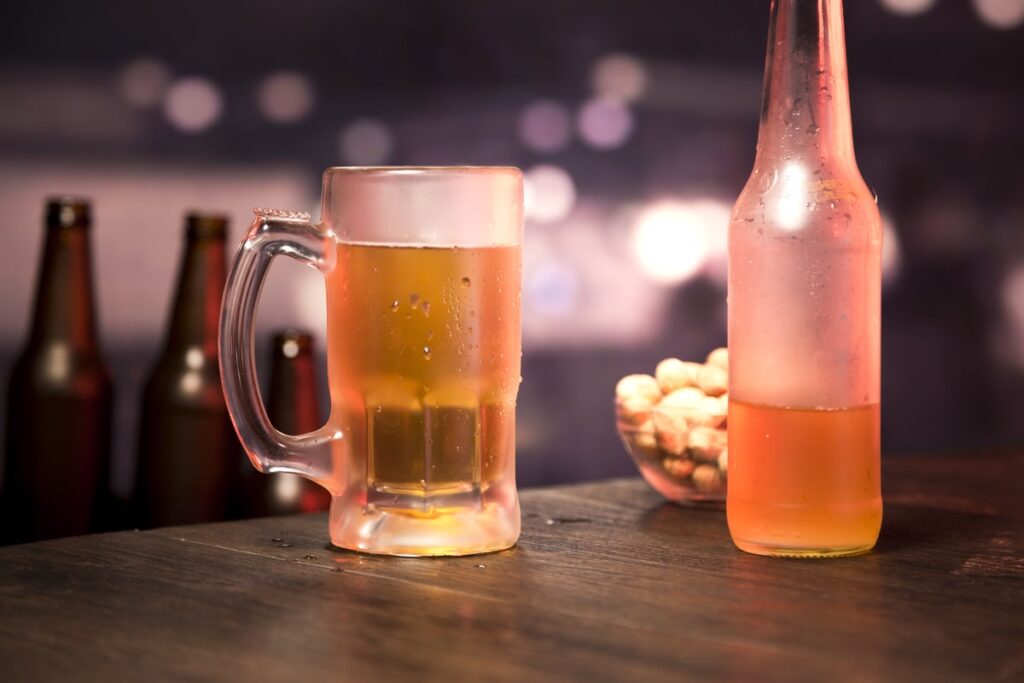
Domestic Beers Market Dynamics: Tariffs Reshape the Game
A seismic shift hit the U.S. beer market on April 4, 2025: a 25% tariff on all imported beer, part of an expanded aluminum tariff program. This was compounded by a universal 10% import tariff and—for EU beers—an additional 20% “reciprocal” duty. Overnight, imports like Mexico’s Modelo Especial ($6.3B in 2024 U.S. sales) and Netherlands’ Heineken faced cost barriers of up to 30%.
The impact? Immediate. Retailers began rebalancing shelf space toward domestic beers, which avoid these duties. U.S. brewers now leverage:
- Price advantage: Imported beers may soon cost 15-30% more, pushing value-driven buyers to local options.
- Supply chain stability: Global brands like Guinness paused shipments to recalibrate logistics; domestic brewers face no such delays.
- Patriotic messaging: Brands like Miller Lite amplify American-made narratives in marketing resonating in a tariff sensitive climate.
Top Domestic Beers: Data-Driven Leaders
Consumer preferences and sales data reveal clear winners. According to YouGov, these domestic beers lead in popularity and velocity:
Beer Brand | Popularity | Key Strengths |
Miller Lite | 42% | Midwest loyalty, health-conscious image |
Coors Light | 44% | Regional campaigns, value pricing |
Bud Light | 42% | Light ABV, DTC partnerships |
Michelob Ultra | 43% | Ultra-low calories, premium positioning |
Busch Light | 35% | Budget-friendly, consistent demand |
Michelob Ultra exemplifies strategic agility. After Bud Light’s 2023 boycott cost Anheuser-Busch $1.4B in sales, Michelob capitalized on its fitness-centric branding to become the domestic beer, claiming 7.3% of U.S. store sales.
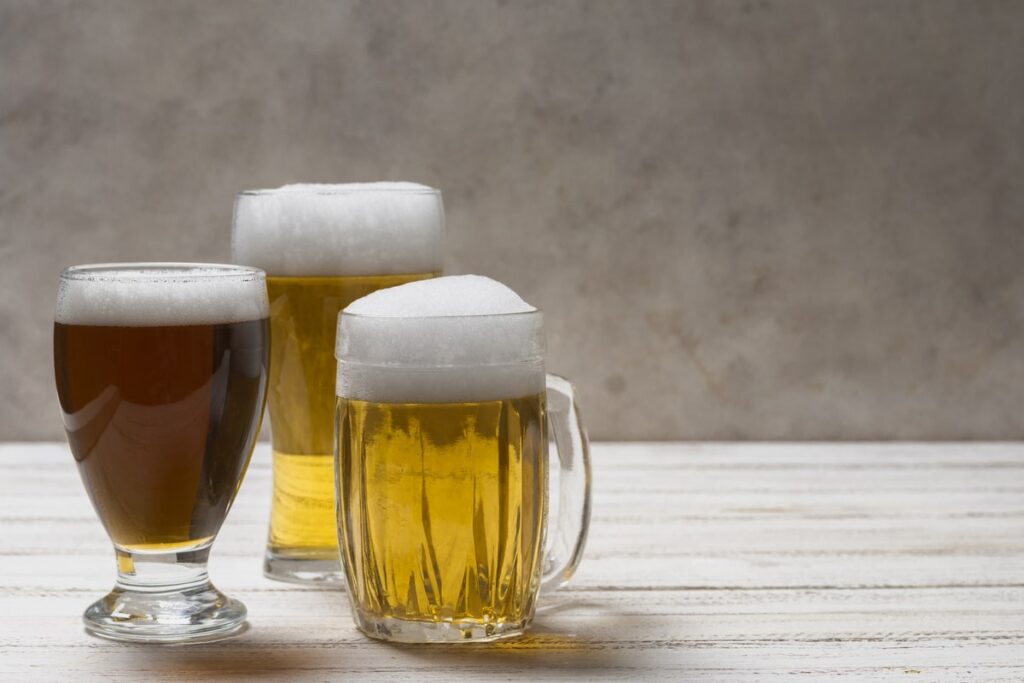
Craft Domestic Beers: Innovation Within Reach
Facing saturation craft brewers are pivoting from experimental extremes to approachable, flagship-driven portfolios. Key 2025 shifts:
- Simplifying SKUs: 10 Barrel Brewing (Oregon) reports veterans returning to “reliable” beers like its Vienna Lager. Lawson’s Finest Liquids (Vermont) celebrates the 10th anniversary of its Sip of Sunshine IPA—now a volume leader.
- Localizing ingredients: Aslan Brewing (Washington) uses Regenerative Organic Certified grains while Brooklyn Brewery champions fonio an ancient African grain aligning with eco-conscious drinkers.
- Beyond beer: Seventh Son Brewing (Ohio) now makes hard seltzer and RTD cocktails while Side Project Brewing (St. Louis) uses smash burgers to draw non-beer crowds to taprooms.
Production Economics: Cost Control Is King
For domestic beers, profitability hinges on mastering costs. A 7-barrel IPA batch reveals the breakdown:
Cost Element | Example Cost | % of Total |
Raw Ingredients | $525 | 37.5% |
Packaging | $280 | 20.0% |
Labor | $320 | 22.9% |
Utilities/Overhead | $275 | 19.6% |
Total | $1,400 | 100% |
Source: BeerCPA analysis 9
With aluminum tariffs inflating can costs since March 2025, breweries like Allagash prioritize glass. Others, like Magnify Brewing (New Jersey), use 12-pack formats to preserve margins.
Future-Proofing Domestic Beers: 3 Strategic Shifts
- Non-Alcoholic Expansion: NA beer sales grew 26.6% in 2024. Domestic leaders like Bud Light now invest in advanced de-alcoholization tech to capture the “sober-curious” market.
- DTC Dominance: Alcohol delivery via DoorDash (available in 32 states) lets brewers bypass retailers. Miller Lite’s app-exclusive offers drive 18% higher repeat sales.
- Hyper-Local Storytelling: With 20% of consumers prioritizing premiumization, breweries like WeldWerks (Colorado) tout local hops like “Elani”—grown in-state for freshness.
Bottom Line
Domestic beers aren’t just surviving 2025’s turbulence. they’re thriving. By leveraging tariff advantages, doubling down on cost efficiency and aligning with health/community trends, U.S. brewers are turning disruption into dominance. As OhBEV’s Vas Art notes: “This isn’t a regulatory footnote—it’s a structural shift. The winners will be those who localize, simplify, and communicate clearly”.
For brewers and drinkers alike, the message is clear: American-made beer is back at the center of the bar.
The State of Domestic Beers in USA: 2025 Market Report
The U.S. beer landscape is undergoing its most radical transformation in decades. While domestic production dipped 1% in 2024, the story beneath the surface reveals fierce brand battles. consumer realignment and strategic pivots reshaping America’s favorite alcoholic beverage.
Market Overview: Contraction and Opportunity
The $129 billion U.S. beer market combined at-home/out-of-home revenue remains the world’s largest but headwinds are intensifying. Craft beer volume fell 4% in 2024. yet dollar sales climbed 3% to $28.8 billion proof that premiumization still has momentum. The brewery count tells a nuanced story: while total U.S. breweries grew marginally (0.2%) to 9,922 in 2024 mass produced “Large/Non-Craft” breweries plummeted 13.1%. This signals market where scale alone no longer guarantees success.
Table: 2024-2025 U.S. Brewery Landscape
Brewery Type | 2024 Count | 2025 Count | Change |
Total U.S. Breweries | 9,906 | 9,922 | +0.2% |
Craft Breweries | 9,761 | 9,796 | +0.4% |
Regional Craft | 257 | 279 | +8.6% |
Microbreweries | 2,092 | 2,029 | -3.0% |
Taprooms | 3,936 | 3,910? | -0.7%* |
Brewpubs | 3,502 | 3,552 | +1.4% |
Large/Non-Craft | 145 | 126 | -13.1% |
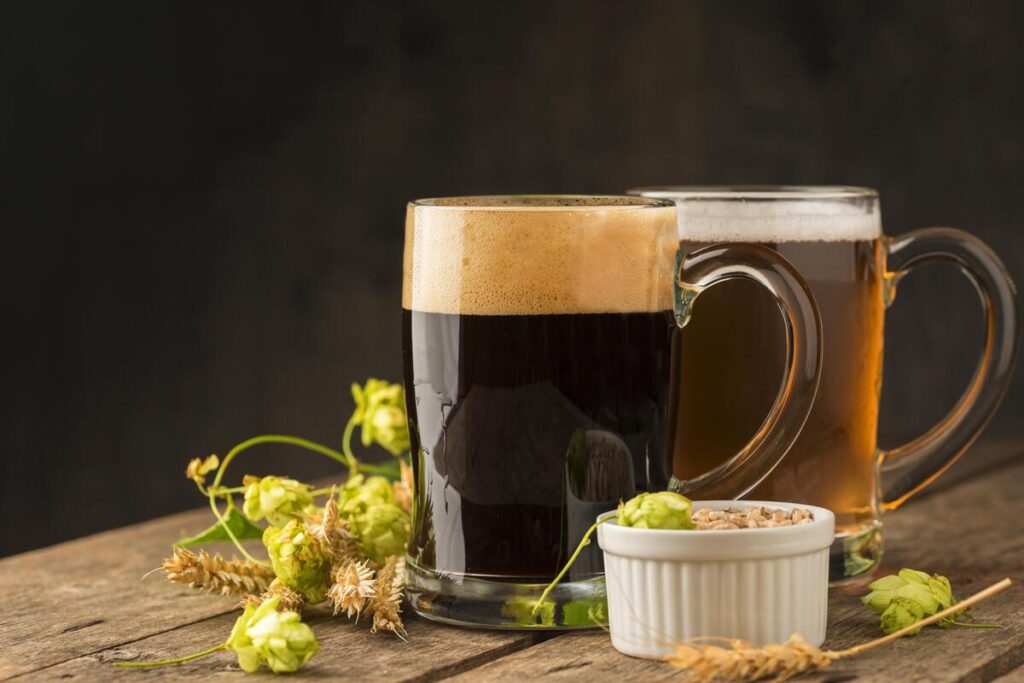
Competitive Landscape: New Kings of Domestic Beers in USA
The throne has been claimed: Modelo Especial is now America’s beer, ending Bud Light’s 20-year reign. Heineken (55% popularity) and Guinness (54%) lead import preferences, but domestic giants are fighting back:
- Michelob Ultra (domestic): Captured 7.3% of store sales by doubling down on low carb active lifestyle positioning.
- Bud Light (domestic): Lost $1.4 billion in sales after a 2023 boycott but retains 42% consumer popularity through aggressive DTC partnerships.
- Coors Light & Miller Lite tied 44% popularity: Leverage regional loyalty Midwest/Southwest and value pricing.
Table: Top Domestic Beers in USA by Consumer Preference (2025)
Brand | Popularity | Key Strength |
Michelob Ultra | 43% | Health-conscious positioning, low calories |
Bud Light | 42% | Broad distribution, light ABV |
Miller Lite | 42% | Value pricing, regional loyalty |
Coors Light | 44% | Marketing campaigns, cold-focused branding |
Busch Light | 35% | Value-driven pricing, rural strongholds |
Craft Beer’s Pivot: Hyper-Localism Wins
Craft breweries face a reckoning: volume fell 5% in early 2025, yet 49% of breweries still grew production—mostly sub-1,000-barrel taprooms and brewpubs. The winning strategies:
- Flagship Focus: Topa Topa Brewing derives 66% of sales from one IPA (Chief Peak). Lawson’s Finest Liquids celebrates 10 years of Sip of Sunshine IPA.
- Beyond Beer: Seventh Son Brewing now produces hard seltzer, cold brew coffee, and RTD cocktails. Fieldwork Brewing sells NA beer in grocery chains.
- Food as Anchor: Moody Tongue Brewing operates Michelin-starred restaurants. Side Project Brewing boosted traffic 30% with smash burgers.
Consumer Trends Driving Domestic Beers in USA
Health & Moderation: 65% of Gen Z plans to drink less in 2025. Non-alcoholic beer sales exploded +25.1% in 2024 as giants like Sierra Nevada launched NA IPAs. Light beers (Michelob Ultra, Bud Light) dominate 60% of growth by aligning with calorie conscious drinkers.
Premiumization: Despite economic pressure, 20% of consumers trade up to super-premium beers +1.5% growth and imports +4.0%. Craft’s 13.3% market share by volume but 24.7% by revenue proves drinkers pay for quality.
Economic Pressures: Tariffs hammer imports 25% on foreign beer since April 2025 giving domestic brewers pricing leverage. Yet aluminum can costs spiked 25%, squeezing margins.
Case Study: The Bud Light to Modelo Flip
The most seismic shift in domestic beers in USA history wasn’t gradual:
- Pre-2023: Bud Light held for 20+ years.
- April 2023: A controversial ad campaign triggered a boycott.
- June 2023: Modelo Especial claimed with Michelob Ultra seizing.
- Impact: Anheuser Busch lost $1.4 billion in sales. Modelo grew to 52% popularity by avoiding cultural landmines and targeting convenience stores.
Future Outlook: Adaptation or Die
Winners in 2025-2026 will execute these plays:
- DTC Expansion: Alcohol delivery via DoorDash/Uber Eats now in 32 states boosts margins for regional players.
- Hybrid Models: Breweries adding spirits, wine and food capture more occasions taprooms with kid menus.
- Ingredient Storytelling: Regenerative grains (Aslan Brewing’s Kernza IPA) and hyper-local hops counter tariff impacts.
Draft
Domestic beers in USA aren’t dying—they’re diversifying. The new playbook demands category agility, local authenticity, and health-aligned innovation. As 49% of breweries grow despite sector contractions, one truth emerges: America’s beer culture is being rebuilt from the taproom up.
America’s Top Domestic Beers: Market Leaders, Regional Champions and Craft Innovators
The Domestic Beer Landscape in 2025
The U.S. beer market is a $129 billion powerhouse but it’s facing seismic shifts. Overall beer production fell 1% in 2024 while domestic giants grappled with declining shipments -7.3% YoY in early 2025. Yet three trends are reshaping the battlefield:
- Health Conscious Demand: Low calorie and non alcoholic beers surge Heineken 0.0 sales jumped 33% in Jan 2025.
- Import Disruption: Modelo Especial dethroned Bud Light as America’s beer in 2023 but new 25-30% tariffs on imported beers April 2025 could boost domestic brands.
- Craft Maturation: Craft brewery growth slowed to 0.4% in 2024, yet they still command 24.7% of retail dollars ($28.8 billion).
Defining “Domestic”: More Than Just Geography
While Modelo Especial leads U.S. sales, it’s an import. True domestic beers are brewed within U.S. borders by brands like:
- Anheuser-Busch InBev Bud Light, Michelob Ultra
- Molson Coors, Coors Light, Miller Lite
- Constellation Brands craft focused
- Independent craft breweries regional, micro, taproom-focused
Note: “Domestic” excludes Mexican giants like Modelo/Corona, despite their U.S. sales dominance.
Top Domestic Beers: Sales Leaders and Regional Powerhouses
1. Michelob Ultra: The Endurance Champion
- Market Position: overall U.S. beer, domestic growth (16% annual surge).
- Key Driver: Ultra-low calories (95 per 12 oz) and low-carb appeal. Its non-alcoholic variant capitalizes on the “sober curious” boom.
- Case Study: While Bud Light lost $1.4 billion in sales post-2023 boycott, Michelob’s health-focused branding helped it seize the #2 overall spot.
2. Coors Light: The Regional Heavyweight
- Market Position: U.S. beer dominates Southwest sales.
- Key Driver: Iconic “cold-activated can” tech and mountain branding. Owns 8 states as the most popular beer (Texas, California).
- Data Point: 44% popularity rating (YouGov), outpacing Budweiser.
3. Miller Lite: The Heartland Hero
- Market Position: U.S. beer in popularity across 30 states.
- Key Driver: “Champagne of Beers” legacy and Midwest loyalty.
- Sales Insight: Despite lower national sales than Modelo, it outsells Coors Light in off-premise stores.
4. Busch & Busch Light: The Value Kings
- Market Position: Top 10 domestic; leads in Illinois/Indiana.
- Key Driver: Budget-friendly pricing. Busch Light holds 35% popularity with rural drinkers.
Table: Domestic Beer Sales Rankings (2025)
Brand | U.S. Rank | Key Market | Growth Driver |
Michelob Ultra | Nationwide | Health/wellness | |
Coors Light | Southwest | Regional loyalty | |
Miller Lite | Midwest (30 states) | Cultural legacy | |
Bud Light | Bars/restaurants | Draft partnerships | |
Busch Light | Rural Midwest | Affordability |
Craft Beer’s Role: Profit Drivers in a Mature Segment
While craft volume sales dipped 4% in 2024, they still deliver outsized value:
- Revenue Powerhouse: Craft beers command 24.7% of U.S. beer dollars ($28.8 billion) despite 13.3% volume share.
- Survival Tactics: Taprooms now diversify with cocktails, dining and events. Brewery counts grew 0.2% in 2024 (9,922 total).
- Regional Stars: Yuengling 37% popularity, Samuel Adams 50% and Great Lakes 37% lead craft adjacent preferences.
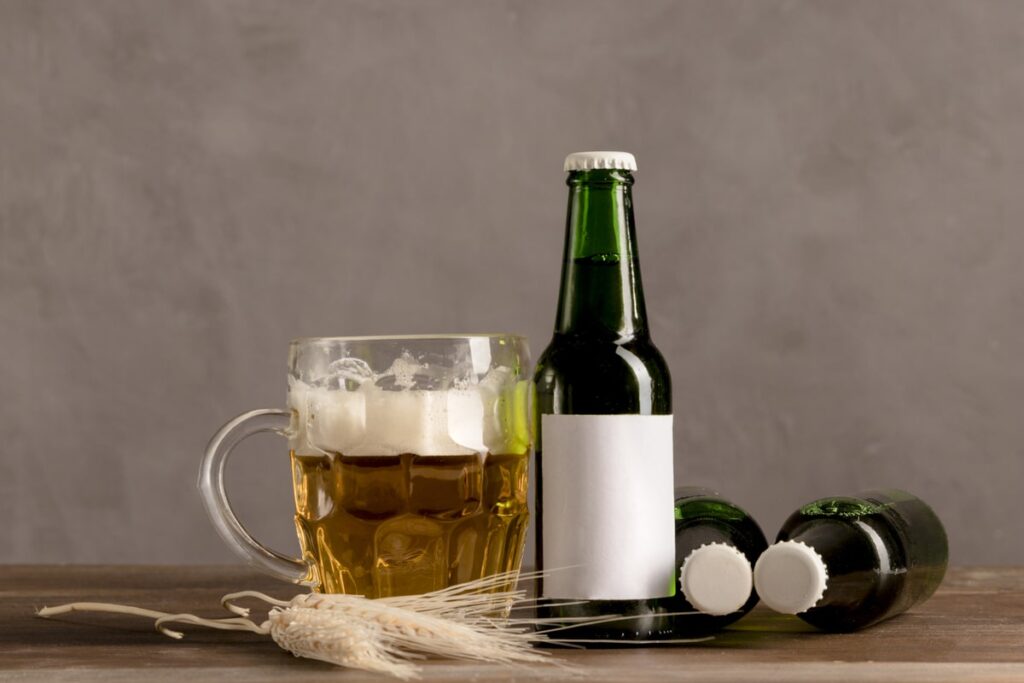
Domestic vs. Import: Tariffs Reshape the Game
April 2025’s 25-30% beer tariffs create immediate opportunities:
- Cost Advantage: Domestic brewers avoid new import fees threatening Modelo/Corona pricing.
- Localized Messaging: Brands like Miller Lite emphasize Midwest roots with “Made in Milwaukee” campaigns.
- Production Agility: U.S. brewers can mimic import styles (Mexican lagers) to fill shelves if tariffs squeeze supply.
Regional Loyalties: Why Geography Matters
Consumer preferences vary wildly by state:
- Miller Lite: #1 in 30 states, including Wisconsin (its birthplace) and Oregon.
- Coors Light: Rules the Southwest (Arizona, New Mexico).
- Guinness: Surprise leader in Georgia/South Carolina—driven by Gen Z viral challenges like “Splitting the G”.
- Bud Light: Holds Ohio/North Carolina despite national controversy.
Domestic beers win through hyper-local storytelling, not national ad blitzes.
Navigating Challenges: Bud Light’s Cautionary Tale
Bud Light’s 2023 boycott proved domestic brands are vulnerable:
- The Backlash: A controversial marketing campaign triggered a $1.4 billion sales loss.
- Recovery Tactics: Doubling down on sports-bar draft partnerships and regional pricing.
- Lesson: Cultural alignment is non-negotiable. Michelob Ultra’s fitness-focused branding exemplifies safer positioning.
Future of Domestic Beer: 3 Trends to Watch
- Non-Alcoholic Expansion: NA beer sales could grow 30%+ in 2025. Domestic leaders like Michelob Ultra Zero are investing heavily.
- Direct-to-Consumer Sales: 76% of craft drinkers want legal DTC shipping—untapped potential for regional brewers.
- Craft Premiumization: Limited sours, barrel-aged stouts, and “beer cocktails” let craft brewers charge $15+/6-pack.
The Bottom Line
Domestic beers thrive by balancing mass appeal with regional authenticity. Michelob Ultra and Coors Light dominate through health focused and refreshment driven branding while craft brewers monetize niche loyalty. With tariffs disrupting imports, U.S. brewers have a unique 2025 opportunity—if they leverage local stories and evolving drinker preferences.
FAQ: Domestic Beers
1. What domestic beers dominate sales in 2025?
Modelo Especial is now the top-selling beer in the U.S. dethroning Bud Light after its 20 year reign. Bud Light fell while Michelob Ultra climbed to. Here’s the breakdown:
- Modelo Especial: 7.3% of all U.S. store sales.
- Michelob Ultra: 43% popularity (YouGov), driven by low calories and premium positioning.
- Budget pick: Busch Light holds 35% popularity, winning with value pricing.
2. How have tariffs impacted beer prices?
New 25% tariffs on imported beer (April 2025) hit brands like Corona and Heineken hard. But domestic brewers face challenges too:
- Canned beer costs rose: A 25% tariff on imported aluminum (since March 2025) increased packaging costs. Over 60% of U.S. beer is sold in cans.
- Price hikes: Expect a $1-$2 increase per 6-pack for imports. Domestic beers may rise $0.50-$1 due to material costs.
3. Are light/low-calorie beers still growing?
Absolutely. Health-conscious drinkers (especially Gen Z/millennials) drive demand:
- Michelob Ultra leads as the #1 on-premise packaged beer (BeerBoard data), thanks to its ultra-low calorie count.
- Non-alcoholic (NA) beer sales surged 26.6% in 2024. Athletic Brewing’s cocktail-inspired NA beers (like Paloma) are breakout hits.
- “Zebra striping” (alternating alcoholic and NA drinks) is a rising trend.
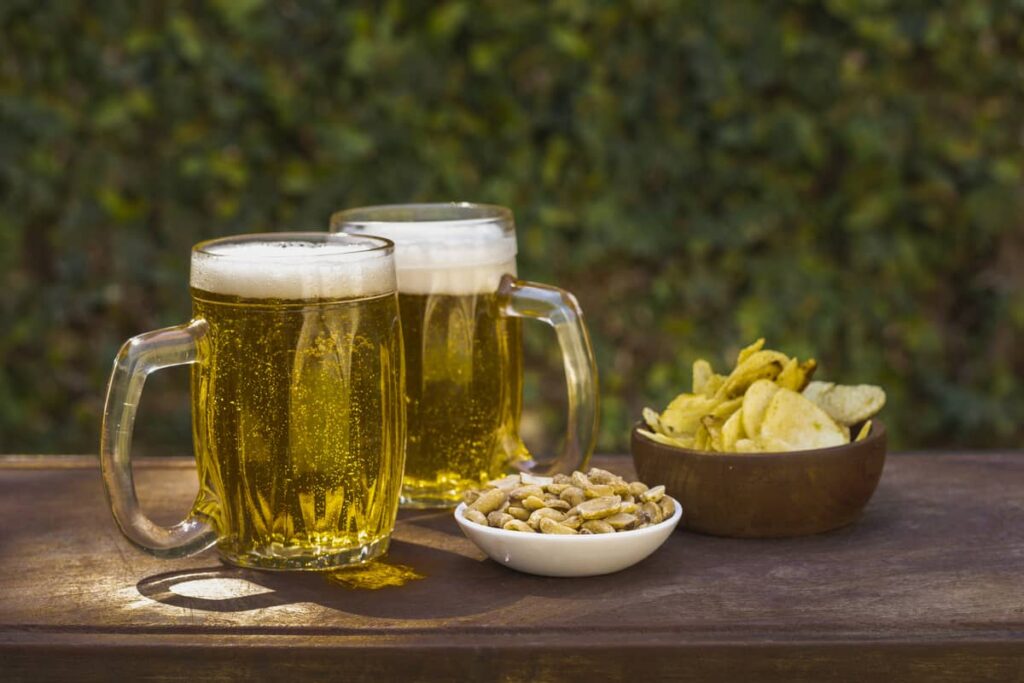
4. Where are people buying domestic beer?
Convenience rules:
- Delivery apps: DoorDash alcohol delivery is now live in 32 states, boosting DTC sales for brands like Bud Light.
- Taprooms: Breweries without food (“taprooms”) grew 0.7% in 2024. They focus on onsite drafts and to-go cans.
- E-commerce: Online beer sales hit $740 million in 2024—up $175 million from 2023.
5. What’s trending in craft domestic beers?
Craft is pivoting to classics:
- Flagship focus: Breweries like Lawson’s Finest Liquids are doubling down on proven hits (Sip of Sunshine IPA) instead of experimental releases.
- Lagers are back: Pilsner sales grew 4.2% in 2024. Wondrous Brewing’s Helles lager won a GABF medal.
- Beyond beer: 70% of taprooms now sell cocktails, NA options, or CBD-infused drinks to expand appeal.
6. Is craft beer declining?
Volume sales dropped 4% in 2024 but dollar sales rose 3% to $28.8 billion, Key shifts:
- Consolidation: 399 craft breweries closed in 2024 (vs. 335 openings).
- Winners: IPAs still dominate 50% of craft sales while hazy IPAs like Rogue’s Batsquatch gain traction.
7. Do regional preferences matter?
Yes—big time. Local loyalty drives sales:
- Miller Lite dominates the Midwest, Coors Light leads in the Southwest.
- Yuengling (37% popularity) is an Eastern U.S. staple.
- Regional craft brewers like Apocalypse Brew Works revive historic styles (Kentucky Common).
8. What’s the future of domestic beer?
5 key shifts to watch:
- Cannabis-infused “fifth category” drinks (like Cycling Frog seltzers) could hit $70M+ sales.
- Sustainability: Regenerative ingredients (e.g., Aslan Brewing’s kernza IPA) will grow.
- 12oz cans over 16oz: Smaller formats keep prices affordable amid inflation.
- Light beer innovation: Sessionable table beers (<3% ABV) target functionality.
- Imports vs. domestic: Tariffs may push drinkers toward U.S. brands—if they nail price and quality.
To know more: What Is Cola Flavor?
